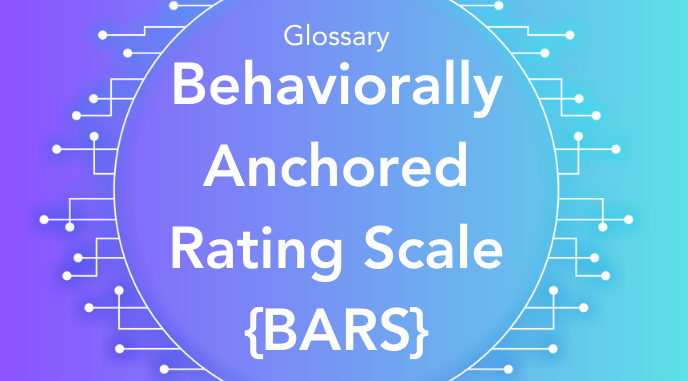- glossary
The Behaviorally Anchored Rating Scale (BARS) is a performance appraisal method that combines elements of traditional rating scales and critical incident techniques to evaluate an employee's performance based on specific behaviors. This method uses detailed descriptions of various performance levels (anchors) that are directly tied to observable behaviors, making it easier for managers to assess employee performance objectively. Each behavior is linked to a numerical rating scale, providing a clear and measurable way to evaluate performance.
BARS is designed to minimize ambiguity and subjectivity in performance evaluations, offering a more accurate and consistent assessment of employee behavior. This method helps managers identify specific areas where employees excel or need improvement, facilitating more effective feedback and development plans. By focusing on actual behaviors rather than abstract traits, BARS provides a clear and actionable framework for performance management.
What are the benefits of the Behaviorally Anchored Rating Scale?
- Reduces subjectivity by linking ratings to specific behaviors.
- Ensures uniformity in performance assessments across different evaluators.
- Provides precise and actionable feedback to employees.
- Helps identify specific areas for employee development and training.
- Improves the quality of performance-related discussions between managers and employees.
-
BARS reduces subjectivity by linking ratings to specific, observable behaviors.
-
It ensures fairness and consistency across evaluations.
-
The method provides clearer and more actionable feedback.
-
BARS allows for tailored evaluations that align with job-specific requirements.
What are the steps to create a BARS:
-
Identify Key Job Dimensions: Break down the job role into key dimensions or important aspects of performance (e.g., customer service, teamwork).
-
Develop Critical Incidents: Collect examples of effective and ineffective behavior for each key job dimension. These should be observable behaviors tied to performance outcomes.
-
Scale Development: Assign each critical incident to a rating scale. Typically, a numerical scale (e.g., 1 to 7) is used, with specific behaviors anchored at each rating point.
-
Test and Review: Have managers and employees review the scale to ensure it reflects actual job performance. This helps in validating that the behaviors are relevant and measurable.
-
Implement and Train: Roll out the BARS across the organization, ensuring that managers are trained on how to use the scale consistently and provide objective feedback.

.png?width=50&height=50&name=Team%20HONO%20logo-01%20(1).png)



